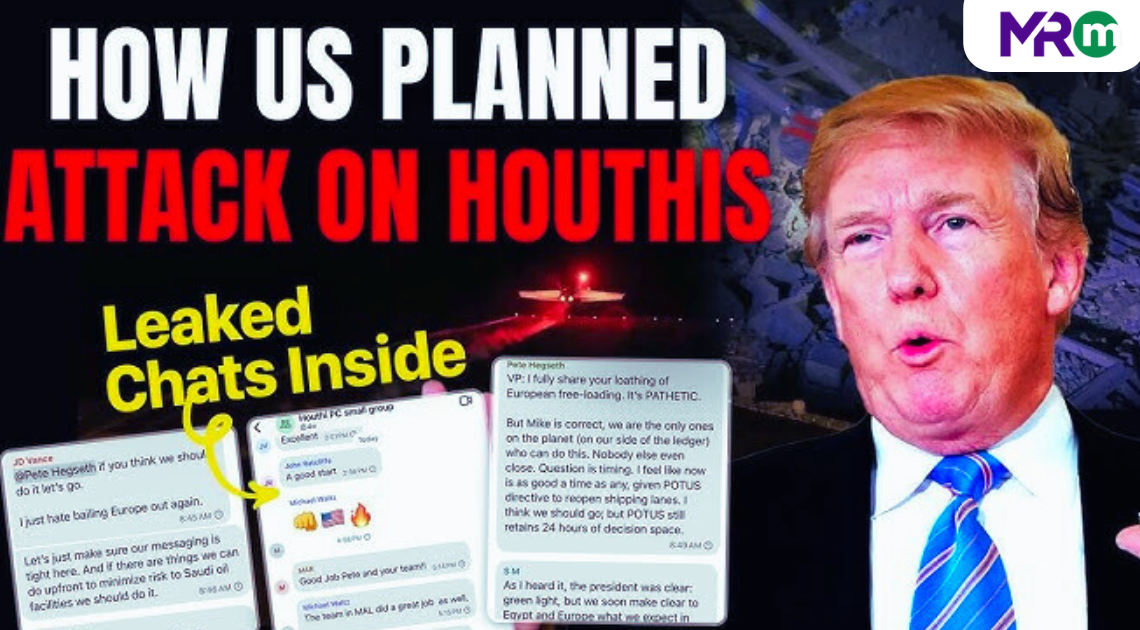Any digital error related to national security can create massive and unrecoverable damages to safety infrastructure. The security problem uncovered in March 2025 revealed extensive information about a US military airstrike in Yemen. At the heart of this incident was Defense Secretary Pete Hegseth, a prominent figure within the Trump administration’s security team.
The international controversy began when sensitive military plans were accidentally leaked to a journalist via an encrypted Signal chat. After this disclosure, the government started debating digital communication practices while facing substantial evaluation of all participants.
This blog dives into the whole story of the Pete Hegseth Yemen airstrike Signal chat leak: what happened, the chain of events, the aftermath, and the far-reaching consequences of this unprecedented breach.
Table of Contents
What Led to the Yemen Airstrike Signal Chat Leak?
Formation of the Signal Chat Group
The incident finds its roots in a Signal chat group titled “Houthi small group.” National Security Advisor Michael Waltz reportedly created this group to coordinate a military airstrike targeting Houthi rebels in Yemen. The group included key members of the US government, such as Vice President JD Vance, Secretary of State Marco Rubio, CIA Director John Ratcliffe, and Defense Secretary Pete Hegseth.
The Mistaken Addition of Jeffrey Goldberg
A severe system failure occurred on March 11, 2025. Jeffrey Goldberg, editor-in-chief of The Atlantic, was mistakenly added to this high-level private chat group. Jeffrey Goldberg spent the following four days reading highly classified information about Yemen military plans while no one observed his activities.
Security experts discovered the extraordinary data breach only after the airstrike execution on March 15, which raised worldwide concerns about the system’s failure.
If you’re interested in further details on Pete Hegseth’s role in the national security landscape, check out this article on Pete Hegseth: Trending News Updates & Impact.
The Content of the Leaked Communications
What Was Shared in the Chat?
The operational specifics were released by Pete Hegseth to the chat at 11:44 AM ET, only six hours before the airstrike started. Leaked messages included:
- The document revealed mission targets located in Yemen with control belonging to the Houthi militia.
- Resources of US military forces prepared for the mission task
- The exact timeline and sequence of the operation
The accidental disclosure allowed Goldberg to report classified warfare strategies, which he analyzed in his detailed article.
Immediate Fallout of the Leak
Within hours, US forces carried out the Yemen airstrike, fulfilling the strategy outlined in the Signal chat. Goldberg followed the operation’s outcomes through continued access to the group discussions, where he employed social media engagement to confirm the attack’s success.
Shortly thereafter, Goldberg published an article in The Atlantic detailing the Secretaries’ communications, the planning, and the execution of the airstrike. The bombshell revelation about the implicit invocation led numerous news outlets across the globe to expose the nation’s operational security vulnerabilities.
Pete Hegseth’s Response to the Leak
Denial and Counterclaims
Pete Hegseth at first said every one of the accusations was false and declared there were no classified battlefield details exchanged. He described Jeffrey Goldberg through an insult of “deceptive” presence while trying to shift readers’ perceptions.
However, the publication of screenshots from the Signal chat and corroborated timelines contradicted Hegseth’s claims. Public confidence in the government administration began to suffer as citizens demanded more evident transparency.
The Steps of the National Security Council Became Active
The National Security Council (NSC) eventually confirmed that the group chat was authentic and acknowledged the security breach. The internal investigation started to determine answers to three essential points.
- What were the circumstances leading to Jeffrey Goldberg joining the group?
- The procedure for verifying unauthorized user blocking failed to be completed.
- Were government protocols violated when using a consumer communication tool like Signal?
Public and Media Reactions
Reactions from Lawmakers
The leak drew sharp reactions from lawmakers across the political spectrum. Democrat leaders called for Pete Hegseth’s job dismissal and more excellent monitoring of digital apps that share classified information. Republican leaders supported Hegseth’s defense and proposed implementing better communication standards to stop additional security breaches.
The scandal made people doubt the government’s use of unprotected communication platforms during military missions.
Media Coverage
The media swiftly responded by covering the scandal. Outlets like The New York Times and The Guardian scrutinized the mishandling of classified data, while the term “Pete Hegseth text” trended online as users searched for more information. The incident caused widespread national debates regarding security measures and accountability processes, as well as digital system management inadequacies.
Implications for US National Security
Communication Vulnerabilities
The Signal chat leak exposed glaring vulnerabilities in the way government officials use digital communication platforms. Although Signal is renowned for its end-to-end encryption, the mistake highlighted human errors in user verification and participant auditing.
Throughout the United States government, there is mounting pressure to adopt certified, classified communication tools alongside new measures to monitor group digital discussions.
Potential Legal Ramifications
Legal arguments have emerged after this incident. Analysts are questioning if Hegseth or other officials violated sections of the Espionage Act. The expected allegations continue to overshadow the involved parties since the information breach occurred during an ongoing military operation, although no official charges have been filed.
Lessons Learned from the Leak
Revising Communication Protocols
The Yemen airstrike leak represents a critical turning point for digital communications at the government level. Following the breach, the Department of Defense and the National Security Council began revising their protocol for digital tools, potentially phasing out apps like Signal for sensitive communications.
Leadership and Accountability
The public disclosure of the situation demonstrates essential lessons about who should be accountable for their actions in leadership positions. People who criticize current appointment methods believe official positions lead to expensive mistakes when loyalty overrides professional ability. The media commentator background of Hegseth, rather than traditional military or policy experience, has prompted extensive discussions about qualifications for the highest governmental positions.
The Broader Significance of the Yemen Airstrike Chat Leak
The Pete Hegseth Yemen airstrike Signal chat leak isn’t just a headline-grabbing scandal. The situation demonstrates our responsibilities regarding classified information management when Globalization and digitalization determine worldwide interconnectivity. This incident creates multiple consequences ranging from changes in US national defense policies to restructured internal communication procedures for foreign nations.
Current investigations will determine if this incident creates new standards regarding government transparency alongside operational safety standards for future years. The necessity for integrating secure communication platforms to handle sensitive topics has passed the point of delay.


 JP Staples Fraternity Ole Miss: His Lasting Impact
JP Staples Fraternity Ole Miss: His Lasting Impact  Tech TheBoringMagazine: Your Go-To Source for Real Tech News
Tech TheBoringMagazine: Your Go-To Source for Real Tech News  Did Caitlin Clark Leave the WNBA for European Basketball?
Did Caitlin Clark Leave the WNBA for European Basketball?  Who Is Aviva Taeidkashani? 5 Key Facts You Should Know
Who Is Aviva Taeidkashani? 5 Key Facts You Should Know  Discover the Success Story of Tammas O’Donnell
Discover the Success Story of Tammas O’Donnell  Scoopupdates .com: Your Go-To Source for Breaking Daily News
Scoopupdates .com: Your Go-To Source for Breaking Daily News